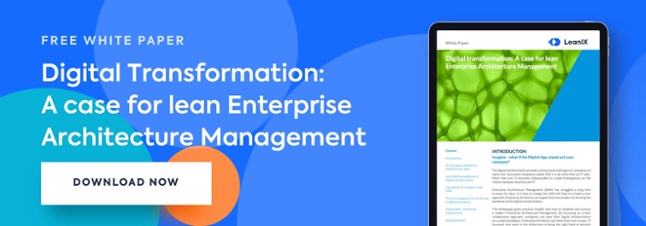In a company in pursuit of digital excellence, it is not only the management that suffers because of poor data quality. Instead, everyone is affected as the quality of local decision depends on the knowledge of the overall context.
The four cornerstones of high data quality.
When considering high data quality, you first have to admit to yourself that balance between data providers and consumers is an illusion. As with any documentation, you do not write it for yourself, but either for the future you, or for a different stakeholder. That said, high quality EA data can only be maintained decentrally anyway, as otherwise the effort of a central entity to maintain data would resemble a modern variant of The Hare and The Hedgehog.There are four cornerstones to maintaining a high level of data quality:
1. Focus on ease-of-use.
People in general tend to be lazy. That implies that usability is not nice-to-have, but mandatory for any data capturing tool. The easier it is to use the tool, the more people will accept it and include it in their daily work.
To achieve ease-of-use, formulate some KPIs:
- How long does it take until a new user can use the tool? Do not make the mistake to ask the expert, ask the slowest candidate.
- How much documentation is required?
- How long does it take to execute basic transactions, e.g. create a new application?
2. Leave out everything that does not create value.
One aspect of usability deserves particular attention. EA initiatives have long been known to collect any data that might possibly help them in the future. As your people are smart, they will ask the question: Why do I need this data record? If you cannot give them a satisfying answer, be prepared that people will not maintain a certain record and consider to drop it.
3. Sensible governance.
Governance might not be the latest trend, but without it, your data will sooner or later become unusable. Successful companies find smart ways of combining governance with other cornerstones, like clear conventions on which data to enter or defined milestones to enter data, e.g. project gateways or definition of done in Scrum. On a more sophisticated level, a lean quality management system helps the “gardeners” of the EA data to keep it regularly up-to-date. Such a quality management system should be supported by the EAM platform.
4. Smart automation.
There is a lot of data in companies already available. This ranges from business data, e.g. customer or product data, to project information, but mainly also to operational information. Examples for the last one are tools used for development or operating, e.g. Docker, but also tools that hold information on response time, system availability or issues occurred. Automating the data exchange is two-fold. On the one hand, the obvious advantage of connecting dots automatically is that no manual maintenance is needed, and that automated data cannot deteriorate. On the other hand however, data automation projects can be tedious and often do not keep their promise.
It is one main task of the EA to decide which data is required automatically to create business value, and for which data manual synchronization is sufficient. Keep in mind the second point as well. In many cases, you will find out that you do need a certain data record.
When you are choosing your tool, look for best-of-breed instead of best-of-suite, i.e. get the best tool for each challenge. There are many excellent tools already present at companies, whether for project management or operative monitoring. Open APIs allow companies to smartly combine these tools. This does not only avoid redundant data capturing, but gives companies a high level of flexibility. As you cannot say what data you will need a year from now, do not sacrifice the opportunity to integrate data once you need it.
In our next and final post we will be looking at how to get started on the way to digital excellence.

.png?width=140&height=107&name=BTMPlaybook-FI%20(1).png)

